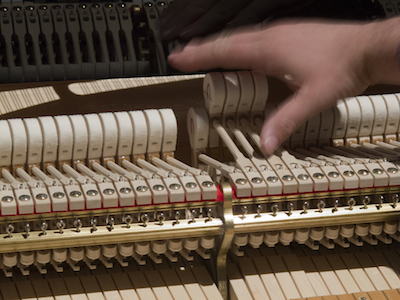No matter what you purchase, taking care of it is a lifetime process. When a piece of equipment comes with a several year guarantee, the manufacturer assumes the item will be well maintained throughout its life.
The piano is no different. Pianos can last decades, but only if they receive proper maintenance. Pianos aren’t a “buy them and leave them alone” kind of item.
Instead, when you purchase a piano, it’s necessary to bring in a trained tuner to keep your piano in the best condition possible.
The first tuning should be shortly after you bring the piano into your home. Place your piano in its final resting spot and wait three to four weeks. Then bring in a tuner. It’s important for your piano to have the chance to acclimate to its new surroundings. A piano breathes and settles in based on room conditions and temperatures. 
No matter how old your piano is – whether you bought it new or used – the sound quality won’t hold forever. Even if you can’t hear the difference, the need still exists. The longer you wait between tunings, the more inflexible the tension of the strings will become.
Tuners, in general, recommend tuning a piano at least twice per year. Spring and fall work well because that adjusts for the harshest of conditions during the coldest and warmest months of the year. A string’s tension is strongly connected to the temperatures of the surrounding area.
Don’t think not playing the piano makes a difference. If you don’t regularly sit down and play, your piano is still impacted by other conditions. The temperatures still change. The wood, metal, and wiring are all still impacted.
Normally, tuning takes one to several hours, depending on how well the piano has been kept. If you haven’t tuned your piano in years, it might take more than one tuning sessions in a row to allow the piano to stay in tune. It might even take repair of the internal parts to ensure a proper sound. Likewise, a new piano, or a piano that has recently been upgraded with new strings will require more tunings in the first year. This is to allow the tension to settle into its new surroundings, and adjust it to hold its sound.
When was the last time you had your piano tuned?

